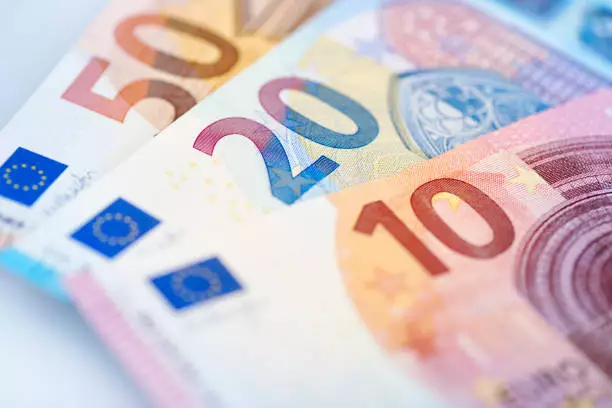In recent weeks, the EUR/USD currency pair has demonstrated a remarkable resilience and upward momentum that defies conventional geopolitical and economic concerns. The relentless climb to 1.1801 signifies more than just fleeting market enthusiasm—it underscores the deep-rooted confidence among traders that the Federal Reserve remains cautious, even dovish, in its approach to monetary policy. This sentiment is not merely a reflection of static economic data but a dynamic market interpretation of how central bank signals intertwine with fiscal policy uncertainties. The market’s keen eye perceives a Fed that is hesitant to raise rates further or abandon its wait-and-see stance, especially amid mounting fiscal worries stemming from unprecedented U.S. legislative measures.
When policy expectations shift towards dovishness, the dollar naturally weakens against a basket of currencies, including the euro. The anticipation of lower interest rates diminishes the dollar’s appeal, prompting traders to position themselves favorably towards higher-yielding or more stable alternatives. The EUR/USD, thus, becomes a barometer of global risk sentiment, with a rising trend reflecting confidence in the European economy’s relative stability and the perceived pause in U.S. monetary tightening. These factors create a potent cocktail that propels the pair higher, often beyond what traditional technical levels alone would suggest.
The Fiscal Landscape: A Double-Edged Sword
While monetary policy plays a vital role, the evolving fiscal landscape is equally influential. The U.S. Senate’s approval of a colossal tax and budget package—expected to increase national debt by an alarming $3.3 trillion—introduces a complex dynamic into the currency’s outlook. On one hand, the legislation signals fiscal stimulus that could, over time, boost economic growth, indirectly supporting the dollar. On the other, it sparks concerns over inflationary pressures and long-term debt sustainability, which could undermine investor confidence and trigger volatility.
The fact that the bill still awaits final approval in the House adds a layer of uncertainty. Markets tend to react sharply to fiscal ambivalence, and this latest development acts as both a catalyst for the euro’s ascent and a reminder of the underlying fragility of U.S. fiscal policy. Investors increasingly question whether the nation’s fiscal trajectory, with its mounting deficits and burgeoning debt, will eventually erode confidence in the dollar’s strength. Such doubts are fueling the euro’s rally as traders look for safer or more stable investment alternatives and see the dollar’s foundations as increasingly shaky in the face of fiscal irresponsibility.
The Technical Outlook: Navigating an Overbought Market
From a technical perspective, the EUR/USD’s current pattern indicates confidence but also signals caution. The H4 chart reveals an ongoing consolidation around 1.1777 following a significant advance to 1.1777. The market appears to be preparing for an upward push toward 1.1848, which could serve as the next milestone. However, the indicators suggest that this rally is running out of steam. The MACD’s position above zero indicates bullish momentum, but its proximity to the zero line warns of an imminent correction. The potential for a reversal points to a testing of support levels at 1.1750 and, if bearish momentum ramps up, a deeper correction down to 1.1660 or even 1.1616.
On the shorter timeframe, the H1 chart illustrates a similar story—an ongoing consolidation with a bias toward a brief push higher before a possible retracement. The stochastic oscillator’s downward turn signals increasing bearish pressure, warning traders that the immediate run-up could quickly give way to profit-taking and a move lower. If the pair breaches support levels convincingly, the bullish thesis could be challenged, and a corrective phase may dominate the near-term outlook.
The Market’s Next Chapter: Data-Driven Decisions
Looking ahead, pivotal U.S. employment data will serve as a crucial catalyst. The upcoming ADP private-sector employment report, followed by June labor market figures, will decisively influence traders’ expectations about the Fed’s upcoming moves. Strong employment figures could embolden the Fed to signal a pause rather than a cut, weighing heavily on the euro’s rally. Conversely, disappointing data may reinforce dovish expectations, fueling further dollar weakness and amplifying the euro’s ascent.
While technical analysis offers a case for a near-term correction, it is fundamentally the data flow and policy signals that will ultimately dictate the currency pair’s trajectory. Market participants must remain vigilant, assessing macroeconomic indicators and geopolitical developments continuously. The current bullish wave, though robust, remains vulnerable to sudden shifts rooted in the evolving fiscal and monetary landscape. The question is whether this rally can sustain itself or if reality-specific data will prompt a swift retraction.
While the euro continues to capitalize on dovish Fed signals and U.S. fiscal uncertainties, investors should adopt a cautious stance. The market’s optimism appears thick but fragile—a house of cards poised on the impetuous winds of policy announcements and economic data.

